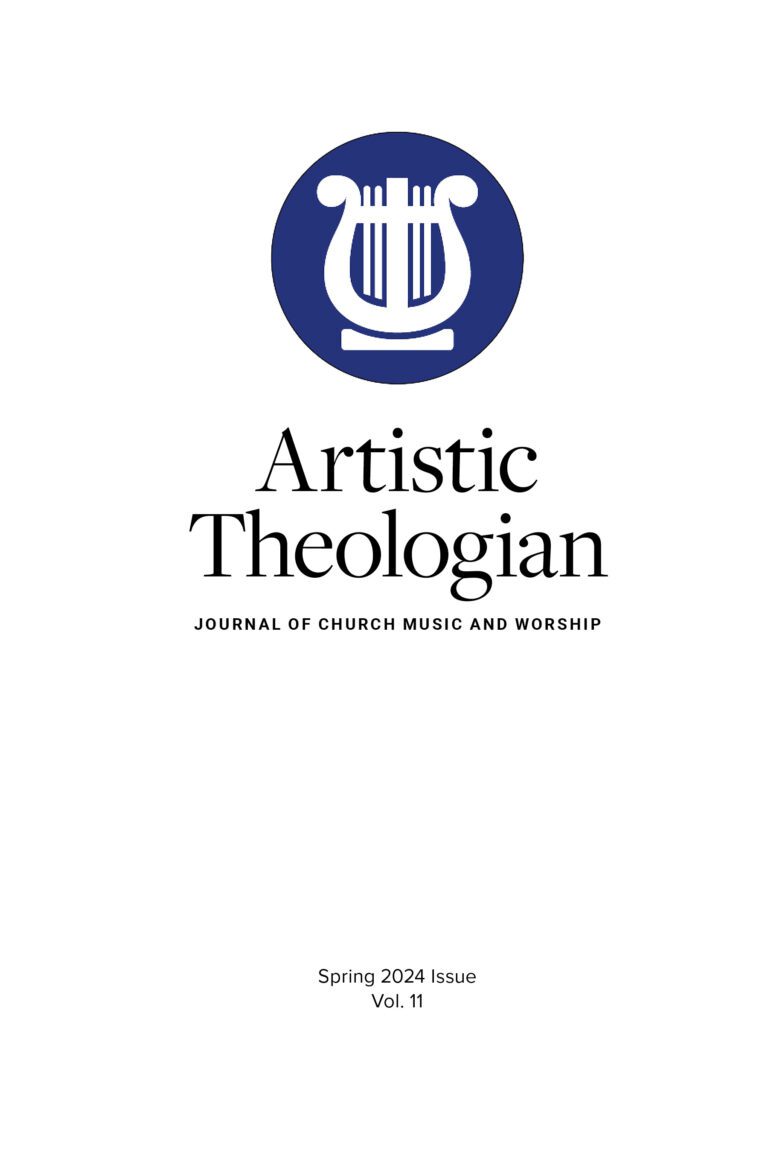
The Relationship of Doxology and Doctrine
Artistic Theologian
Volume 11, Summer 2024
Editor: Joshua A. Waggener
Doxology has been defined as a “formula for expressing praise or glory to God.”1 In New Testament language, a doxological expression becomes a “sacrifice of praise, … the fruit of lips that acknowledge [Jesus’s] name” (Heb. 13:15, ESV), given through Christ to God as an appropriate response to Christ’s atoning work.
Christian churches most often offer their doxology through singing. In many churches, the doxology offered is sincere and simple, unadorned with poetic or musical artifice. The Lord despises not, looking at the heart (1 Sam. 16:7).
But in other churches, the doxology offered is adorned with splendid poetry and superb music. The Scriptures themselves give precedence for such in the poetry of the Psalms and the music of the temple (2 Chron. 5:11–14). As the Lukan canticles of Mary (Luke 1:46–55), Zechariah (1:67–79), and Simeon (2:29–32) demonstrate (following Old Testament models), adorned poetic praise remains fitting for New Testament worship.
Does this mean that Christian worship can be both pleasing to the Savior and pleasing to the senses? Do aesthetic qualities sometimes enhance doxological expression?
Yes.
Yet, as this issue of the Artistic Theologian makes clear, doxology is not to be divorced from doctrine. Love for and uses of beauty in worship do not dismiss the need for truth. Jesus has “the words of eternal life” (John 6:68), and our presentation of Jesus’s teaching should reveal him as “the Holy One of God” (John 6:69), complete with all the divine attributes.
Love for and uses of beauty in worship do not dismiss the need for ethical goodness. As Amos declared to the lawbreaking worshipers in Israel, “Take away from me the noise of your songs; to the melody of your harps I will not listen. But let justice roll down like waters, and righteousness like an ever-flowing stream” (Amos 5:23–24).
In our doxological expressions, we are to present God’s Word with an artistic adornment that does not distract from but instead helps to display doctrinal truth and ethical goodness. As Paul admonished Titus, we are to “teach what accords with sound doctrine” (2:1), and in such a way that “in everything [we] may adorn the doctrine of God our Savior” (2:10, emphasis added).
This issue of the Artistic Theologian explores the relationship between doxology and doctrine in the Christian life, in Christian song, and in global missions. First, Daniel Webster discusses Clement of Alexandria’s patristic aesthetics (evident in passages in his late-second century work Paedagogus) which—in contrast to the extravagant living and worship of images amongst his contemporaries—emphasize the beauty of Christ and alignment with Christian ethics.
Second, Holly Farrow compares the hymnic language of English Baptists Anne Dutton (1692–1765) and Anne Steele (1717–1778), giving evidence for Dutton’s emphasis on doctrine and Sutton’s eagerness for doxology, while showing that, in the end, these are complementary.
Third, David Music documents the first American work for church choir labeled as a “cantata”—Thomas Hastings’s The Christian Sabbath (1816)—tracing its origins, critiquing its weaknesses, and proposing reasons for its short musical lifespan. (This research relies in part on the resources of the Bowld Music Library at Southwestern.)
Fourth, James Cheesman, in response to controversy over Keith Getty and Stuart Townend’s hymn “In Christ Alone” (2001), asks “Should believers sing about God’s wrath in worship?” Informed by a comparison of theological views on the wrath of God (historic and contemporary), Cheesman assesses the issues involved and presents a view of Christ’s atoning work worth singing about, along with examples of relevant hymns dating from medieval times to recent years.
Finally, John Benham’s article—adapted from a keynote presentation at the September 2023 Global Consultation on Arts and Music in Missions held at Southwestern—helps us appreciate the complexity and potential of using the arts in cross-cultural church planting. Benham’s advocacy for a critical approach to contextualization that applies biblical principles to local artistic choices—in short, the work of an ethnodoxologist—is supported by ethnomusicology, missiology, and inspirational first-hand accounts from around the world.
As you consider the relationship between doxology and doctrine in your own setting, we hope that this issue of the Artistic Theologian will help you pursue worship that is biblically faithful, musically excellent, and ministry focused. Also, we welcome article and book review submissions for our next volume. The deadline for submission is October 1, 2024.
- David W. Music, “Doxology,” in Holman Illustrated Bible Dictionary, ed. Chad Brand et al. (Nashville, TN: Holman Bible Publishers, 2003), 441. Music adds that “doxologies generally contain two elements, an ascription of praise to God (usually referred to in third person) and an expression of His infinite nature.” ↩︎





